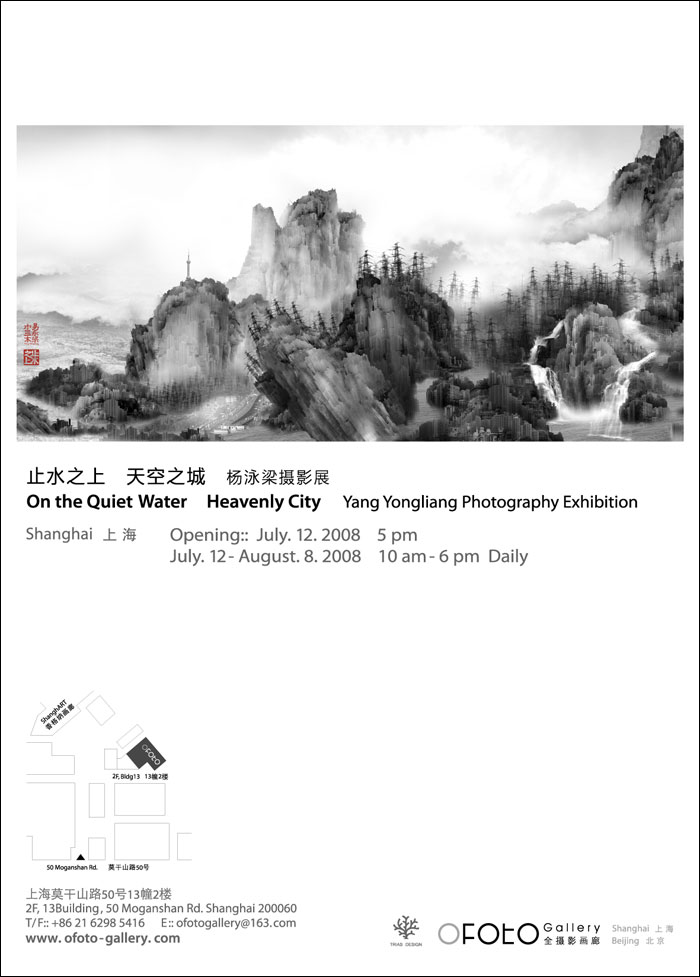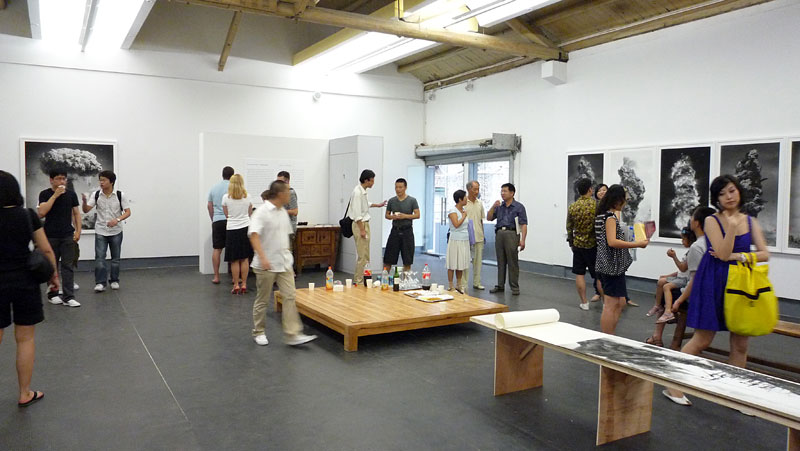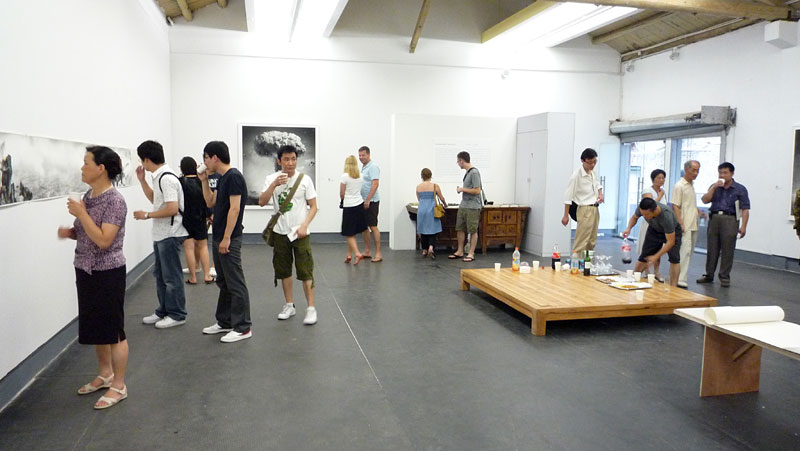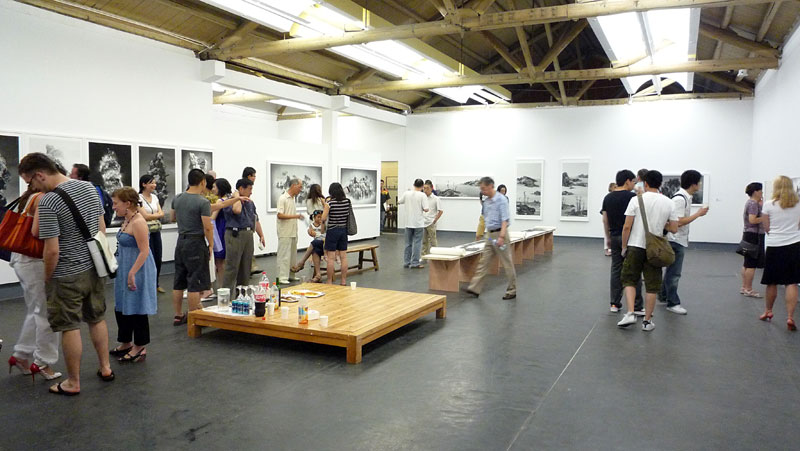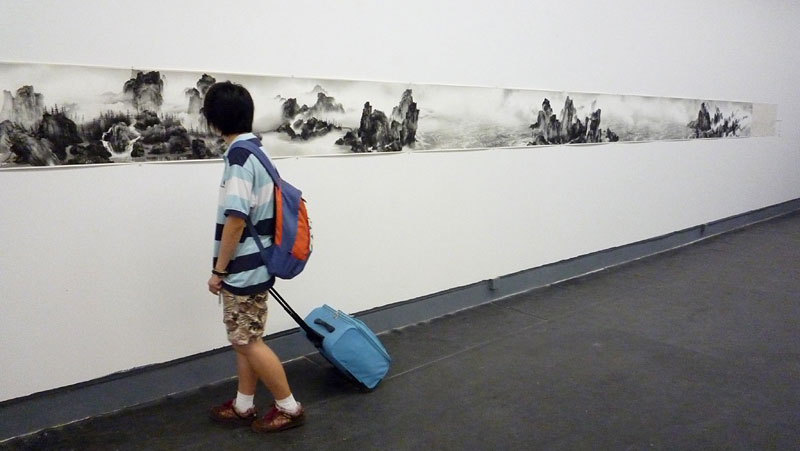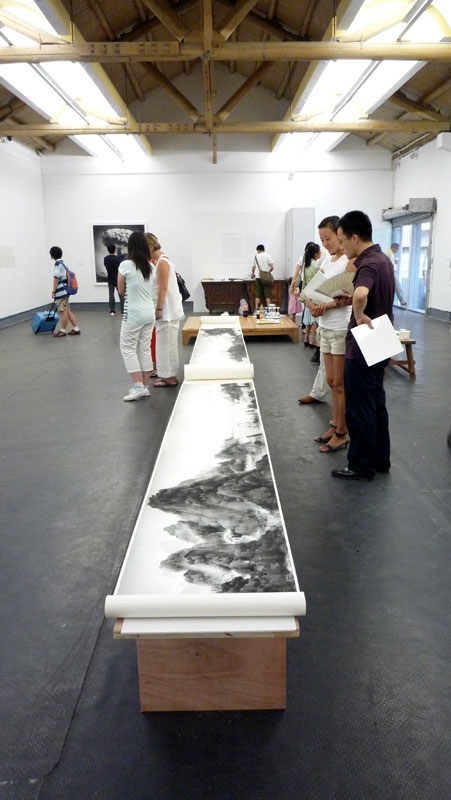Return and Transcend
by Cong Yun
The return of Chinese culture has been a major trend in recent years. Not only image art, but also architecture, design, business, and even everyday life have impacts of this trend. Such consciousness, coming with the wealth of material life, the reform of social structure, the rise of contemporary Chinese art, arouses wide meditations on Chinese culture and its contemporariness. It echoes the pursuit on reviving Chinese spirit of over a hundred years ago.
Yang's previous series, the Phantom Landscape, has left a strong impression to audience. The return of Chinese culture can be considered as a strategy to enter into his work. The Phantom Landscape, with remarkable skills of computer graphics, counterfeits the Chinese landscape painting aesthetics. It is anti-aesthetics. The alienated realities in the images, the imitated form of traditional landscape painting, and even the appropriation of landscape aesthetics, all deliver a futuristic sense of sur-aesthetics. The artist creates a type of new images via imitation and appropriation, which reflected true situations of a profoundly changing society from a digital and virtue perspective.
Accordingly, the series of On the Quiet Water in this solo show carry on the previous style. But the artist has replaced a few pro forma imitations with present elements, such as sinking boat, airship, the solar eclipse, and the symbols of destruction. They reflects issues of environmental pollution, water resources, etc.
But the other series in this show, The Sky City, contains more changes. The return to Chinese tradition and the futuristic tendency in these works become subtle on one hand and distinctive on the other. If it was a straight appropriation of tradition element in his previous works, then their use in this new series becomes much more subtle. The Sky City adds a few new elements-clouds and nuclear. They are very destructive powers". But if we look at them from aesthetic perspective, that Chinese literati best owed to Taihu stones-rugous, thin, leaking and permeable, it has the same aesthetics of landscape painting-a transcendence of existed "images", a spiritual pursuit of human life to Taoism. The clouds hence in these images are not only similar in shape but aesthetics with the Taihu stones. The traditional aesthetics has been integrated in the grand illusions of future with the help of computer graphics. It is artist’s unconscious reveal of inherent culture impact in his creation. We may recall in our childhood, looking up to the sky:“What does that piece of cloud look like?" " A monkey, a stone lion...". Besides, the babel suggests immediately the Chinese ancient ornamental column. Although the artist intends to present that "the hopes of human future either establishes on a virtual city in the sky or far away from the Earth. Like the great navigation era several hundred years ago, human shifts colonization from new land to new planet", the supposed fear of this colonization, seems to me, dissolves right after the appearance of a tiny astronaut, who turned illusion to future of mankind suddenly admirable.
If the 1990s Chinese art was a conscious "contemporary turn" ruptured from the previous decade, it was established on a "new time and space system", then Yang Yongliang including other artists’ works, making up of digital technology, reproducible images-the new media; making up of cultural identity and self-identification; standing on the global structure that the 1990s contemporary artists had built up, have their bases and prerequisites to possibly transcend the "contemporary art".
Yang’s futuristic achievement in his works, or to say, the impacts of changing society in his work is completely different from a number of contemporary artists who uses photography to document or represent realities. The photographic senses of the presence and the present, interfered with the new media, are degraded to a tool of material collection, meanwhile the power of photo images is emphasised and enhanced-imagination of future is written by a new language with new grammar and new vocabulary.
The return to Chinese culture and the transcendence of contemporariness, reveal merely a corner of a much wider and vivid scene-a reciprocal activation of the tradition and the present, that has been a hundred years pursuit in renascence of Chinese spirit.
